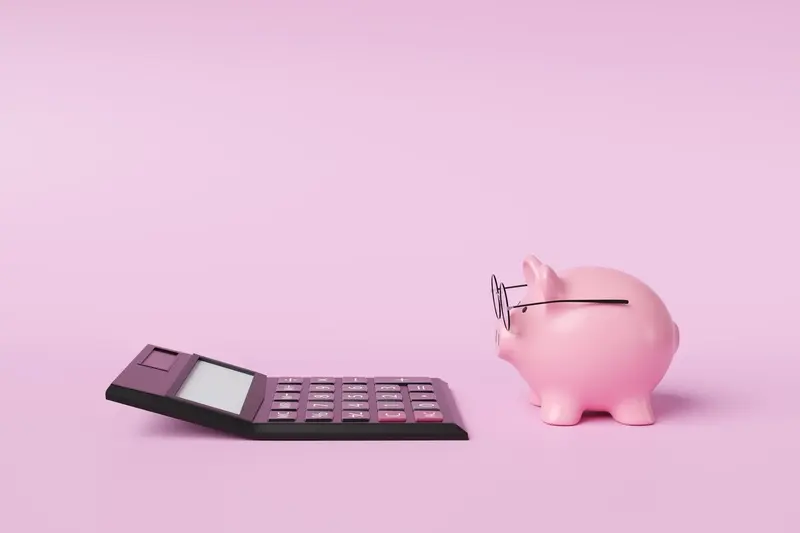What Happens If I Run Out Of Money During Development?
You're halfway through developing your dream app when your bank account starts looking as empty as your phone battery at 5pm. It happens more than you'd think—studies show that nearly 70% of startups run into cash flow problems during their first year, and app development projects are no exception. The excitement of seeing your idea come to life can quickly turn into panic when the money runs out.
Running out of funds during app development isn't just about having to stop work; it's about potentially losing everything you've invested so far. Your code, your progress, your timeline—all of it hangs in the balance. But here's the thing: this situation is far from hopeless, and there are more options available than most people realise.
The worst thing you can do when facing funding issues is to ignore them and hope they'll sort themselves out
Throughout this guide, we'll explore the warning signs that your app development funding is running low, practical strategies for managing tight budgets, and flexible payment options that can keep your project moving forward. We'll also look at emergency funding sources and how to have those difficult conversations with your development team. Most importantly, you'll learn how to protect yourself from budget overruns in the first place—because prevention really is better than cure when it comes to startup cash flow and app development.
Understanding the Money Problem
Running out of money during app development is more common than you might think—and it's not always about poor planning. I've seen brilliant entrepreneurs with solid business plans hit financial walls simply because app development costs can be unpredictable. Sometimes a feature takes longer to build than expected; sometimes you discover technical challenges that weren't obvious at the start.
The real issue isn't just about having less money in your account. When funds run low during development, you're facing a few different problems at once. Your development team needs paying, but you also need to keep the project moving forward. Stop now and you might lose all the progress you've made so far. Push forward without enough budget and you could end up with a half-finished app that doesn't work properly.
Why This Happens to Good Projects
Most budget problems aren't caused by reckless spending. They happen because app development involves building something that's never been built before—your specific app with your specific features. Even experienced developers can't predict every challenge that'll come up. A simple login system might need extra security features; that social sharing function might require more backend work than anyone expected.
The key is recognising that running short on funds doesn't mean your project is doomed. It just means you need a plan.
Warning Signs Your Budget Is Running Low
After years of working with startups on their app development projects, I've seen the same warning signs pop up time and time again. The thing is, running out of money during development doesn't happen overnight—it's usually a slow burn that catches founders off guard. But if you know what to look for, you can spot the red flags before they become real problems.
The first sign is when you start questioning every small expense. You know, those moments when you're hesitating over a £50 design asset or wondering if you really need that extra testing round. This shift in thinking often happens weeks before the actual cash flow crisis hits. Your mindset changes from "what do we need to build this properly" to "what's the absolute minimum we can get away with."
Financial Red Flags to Watch For
Here are the most common warning signs that your app development funding is getting tight:
Set up automatic alerts when your business account drops below three months of development costs. This gives you enough time to explore funding options before you're in crisis mode.
The biggest mistake I see is founders who ignore these signs and hope things will sort themselves out. They won't. If you're experiencing any of these warning signs, it's time to have an honest conversation about your startup cash flow and explore app development payment plans before you're forced into making rushed decisions.
What to Do When Funds Get Tight
Right, so the money's running low and you're starting to panic. I get it—I've seen this happen more times than I care to count. The good news? You've got options, and none of them involve throwing your app idea in the bin.
First things first: don't make any hasty decisions. When budgets get squeezed, people often think they need to cut features or rush the launch. Bad idea. Instead, take a step back and look at what you've already built. Can you launch a simpler version first? This isn't about cutting corners—it's about being smart with what you have.
Your immediate options when cash runs short
The worst thing you can do is simply stop communicating with your development team. They're not mind readers, and they definitely can't help if they don't know what's going on. Most decent agencies—ourselves included—would rather work with you to find a solution than watch your project fail.
Talking to Your Development Team About Money Issues
Here's the thing about money conversations—they're awkward for everyone involved. I've been on both sides of these discussions over the years, and trust me, nobody wakes up excited to talk about running out of cash. But when your app development funding starts looking tight, having an honest chat with your development team isn't just smart; it's absolutely necessary.
Most development teams have seen this before. We're not going to be shocked or offended if you need to discuss payment plans or rearrange your startup cash flow for app development. What we do appreciate is honesty and early communication. Don't wait until you've completely run out of money to bring it up—that puts everyone in a difficult position.
Starting the Conversation
Begin by explaining your situation clearly. How much runway do you have left? What are your realistic funding prospects? Your team needs to understand the full picture to help you make the best decisions about moving forward.
The worst thing you can do is pretend everything's fine when it isn't—that helps nobody and usually makes the situation worse
Many agencies offer app development payment plans or can adjust timelines to match your cash flow. Some might even consider equity arrangements if they believe in your product. The key is being upfront about what you can afford and when you can afford it.
Payment Plans and Flexible Options
Most development agencies understand that cash flow can be tricky—we've all been there ourselves! That's why many of us offer payment plans that can help spread the cost over several months rather than demanding everything upfront. The key is asking about these options before you're completely strapped for cash.
Common Payment Structures
Development teams typically offer a few different approaches. Some work on milestone-based payments where you pay as each section gets completed. Others might accept smaller monthly payments over a longer period. The best agencies will work with you to find something that fits your budget.
What You Need to Bring to the Table
Agencies aren't charities—they need to see that you're serious and have a plan. Come prepared with realistic projections of when you'll have more funding available. Show them your business plan and demonstrate that this app has genuine potential. The more professional you appear, the more likely they'll be to work with you on flexible terms.
Finding Emergency Funding for Your App
When your app development budget hits rock bottom, you need to act fast. The good news is there are several options available—some quicker than others. Personal savings are often the fastest solution; you can transfer money immediately and keep development moving. Friends and family come next on the speed scale, though mixing money with relationships requires careful handling.
Business loans from banks take longer but offer more substantial amounts. You'll need solid financial records and a clear business plan. Credit cards provide instant access to funds, but the high interest rates can create bigger problems down the line. Angel investors and venture capitalists offer the largest funding amounts, yet they also demand equity in your company and can take months to make decisions.
Quick Funding Sources
Crowdfunding platforms like Kickstarter work well if your app has mass appeal—people love backing innovative ideas they can understand. Government grants exist for tech startups, though the application process is lengthy and competitive. Revenue-based financing is gaining popularity; investors provide cash in exchange for a percentage of future app revenue rather than company ownership.
Keep detailed records of all development costs and progress. Investors want to see exactly where their money will go and what you've already achieved.
The key is having multiple funding options ready before you need them. Start building relationships with potential investors early, not when you're desperate for cash.
Protecting Yourself from Budget Overruns
After years of working with clients who've watched their app budgets spiral out of control, I can tell you that prevention is always better than cure. The best way to handle budget overruns is to stop them happening in the first place—and that starts with proper planning and clear boundaries from day one.
Set Clear Project Boundaries
Your biggest weapon against budget overruns is a detailed project scope. This isn't just a rough outline of what you want; it's a comprehensive document that outlines every feature, every screen, and every piece of functionality your app will include. When something isn't in the scope, it doesn't get built without a proper change request and additional budget approval.
I always tell my clients to think of their project scope as a contract with themselves. Once you've agreed on what's included, stick to it. New ideas will come up during development—they always do—but each one needs to be evaluated against your remaining budget and timeline.
Build in a Contingency Buffer
Smart clients always add a contingency buffer to their budget. Here's what I recommend setting aside:
This buffer isn't for adding new features—it's for handling the unexpected issues that crop up during development. Trust me, they will happen, and having that financial cushion means they won't derail your entire project.
Conclusion
Running out of money during app development isn't the end of the world—though it certainly feels like it at the time! I've watched plenty of brilliant app ideas survive funding crises and go on to become successful products. The key is catching the warning signs early and acting quickly when your budget starts looking shaky.
Your development team wants your project to succeed just as much as you do. Most agencies (ourselves included) would rather work out a payment plan or adjust the project scope than see a good app die halfway through development. Don't be embarrassed about money troubles—we've seen it all before and there are usually solutions available.
The best protection against budget overruns is good planning from the start. Build in a buffer, ask lots of questions about costs, and keep a close eye on your spending throughout the project. But if things do go wrong, remember that flexible payment options, emergency funding sources, and honest conversations with your development team can often save the day.
App development funding challenges are part of the startup journey for many entrepreneurs. The companies that succeed aren't necessarily the ones with the biggest budgets—they're the ones that plan well, communicate openly, and adapt when things don't go according to plan.
Share this
Subscribe To Our Learning Centre
You May Also Like
These Related Guides

How Much Does It Cost To Build An Apple Watch App?

What Happens When You Skip Agile Practices In Mobile App Development?



